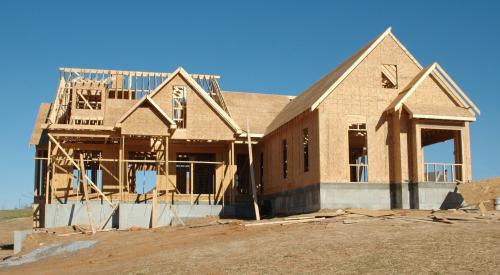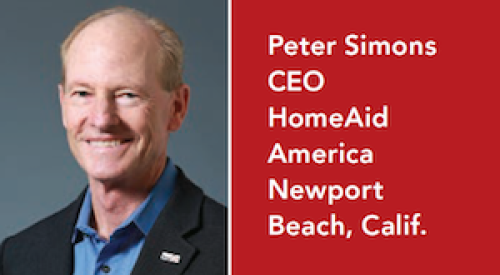The imminent disruption of the home building industry was the topic of the 2018 Meyers Research National Housing Outlook event in support of HomeAid America at the 2018 International Builders’ Show and Kitchen & Bath Industry Show in Orlando, Fla.
In his keynote address, Tim Sullivan, managing principal at Meyers Research, stated that “this industry is ready for disruption,” and asked, “who will be the Elon Musk of home building?” Sullivan believes that it may be individuals or companies outside of the housing industry that may have the clearest view of and most efficient approach for what it needs.
Building on the concept of disruption, the presentation by Tim Costello, President and CEO at BDX, caused several industry experts present to take pause. He outlined three factors priming the housing industry for disruption: over-attachment to the status quo, underestimation of the impact and ramifications of change, and a lack of vision, or appreciation for others’ vision. He added that the burden of these three factors typically affect public companies more than private companies, as public companies are more hesitant to take a loss. Costello argued that many companies seeking to innovate rather than just survive, like Tesla, incorporate losses into their business plans that emphasize innovation and long-term vision.
Home Building's Clock Speed
Labeled home building’s “fog of war,” Costello warned that focusing on survival hampers vision and innovation for many companies. Home building, he said, has a ‘clock speed’ of 20 or more years. This means that it would take 20 or more years for consumers to notice changes in products and processes in the housing industry. With one of the slowest ‘clock speeds,’ conventional thinking in the industry is more likely to become entrenched thinking, and companies are more likely to become resistant to change. “You don’t have time anymore to wait and see how others adopt technology,” he said.
Indeed, Costello warns that the housing industry is “catastrophically” risky, insofar as the risk of doing and changing nothing is worse than the risk of doing something.
Costello views tech as a significant factor that will revolutionize the way home building and builders operate now, and in the future. He cited augmented reality (AR), virtual reality (VR), robotics, big data, 3D printing, and sharing economies as some of the 25+ tech items that will completely change the industry.
Costello stated that such changes coming to home building may not come from the inside. Surveying the room, no one spoke up to describe their own tech innovations. Costello concluded by saying that companies seeking a ‘digital strategy’ are looking at the current market climate incorrectly. He summed this up by saying, “there is no digital strategy, there is only strategy in the digital world.”
In a panel of experts speaking on current market conditions and trends, Tim Costello’s presentation earlier in the morning, and the impact of the new GOP tax law signed by President Trump were recurring themes.
What Keeps You Up at Night?
When asked by the moderator, “what keeps you up at night,” the most common answer was the concept of disruption as described by Costello. Bird Anderson, EVP of Home Builder Banking at Wells Fargo Commercial Real Estate said, “The world of home building got flat about three to four years ago.” While he said that overall the market is healthy, he is watching the impact of consolidation among building firms, and disequilibrium of debt markets. Chad Crow, President and CEO of Builders First Source, views consolidation as an opportunity, “We need to change how we do things [in home building] … The cyclicality of our business is slow to change. This has held us back, from an advancement standpoint.”
Regarding the new tax law, all three panelists thought that it would be a net positive for the housing industry, and that currently, it has not changed the way businesses in housing are running. Scott Stowell, Executive Chairman of the Board at CalAtlantic Group, said that the new law is “not being translated down to the project level,” agreeing that the law is a net positive, despite changes to the mortgage interest deduction negatively impacting high-value markets. Stowell closed the panel discussion by saying that, “thinking and operating in the status quo do so at their own peril.”
Also speaking at the event was Peter Simons, CEO of HomeAid America. Over the past four years, HomeAid has raised $500,000, with over 500 projects built since its founding in 1989. Simons highlighted more of the organization’s milestones, including $230 million in housing built, 10,000 beds filled, and 300,000 people housed over the past 28 years. In addition to housing, HomeAid offers after-school programs, including computer assistance, and offers budget guidance for families seeking financial stability.
Simons concluded by announcing plans for an 18th HomeAid chapter in Texas, joining the 17 HomeAid chapters in 12 states, and a call to action for those attending the event to take on leadership roles within local HomeAid chapters, to involve employees in community outreach, and/or to donate to HomeAid.













